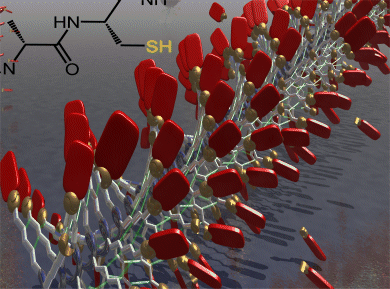Molecular platforms are stable discrete entities, which have functional groups in well-defined positions to allow efficient modification with a wide range of compounds to give access to novel structures with unique properties. Recently, natural biomacromolecules, such as DNA and viruses, have been diverted from their natural function to act as macromolecular platforms, especially for chromophoric scaffolding in view of possible light-harvesting applications.
Helical polyisocyanides containing the alanine–cysteine motif in their side chains have been prepared by S. Le Gac, A. E. Rowan, and R. J. M. Nolte et al. from Radboud University Nijmegen, The Netherlands. The cysteine sulfur atoms are regularly aligned along the polymer axis, which provides a unique platform for the scaffolding of various entities by using, for example, the versatile thio-click-chemistry postmodification approach.

- Cysteine-Containing Polyisocyanides as Versatile Nanoplatforms for Chromophoric and Bioscaffolding
S. Le Gac, E. Schwartz, M. Koepf, J. J. L. M. Cornelissen, A. E. Rowan, R. J. M. Nolte,
Chem. Eur. J. 2010, 16 (21).
DOI: 10.1002/chem.200903502




